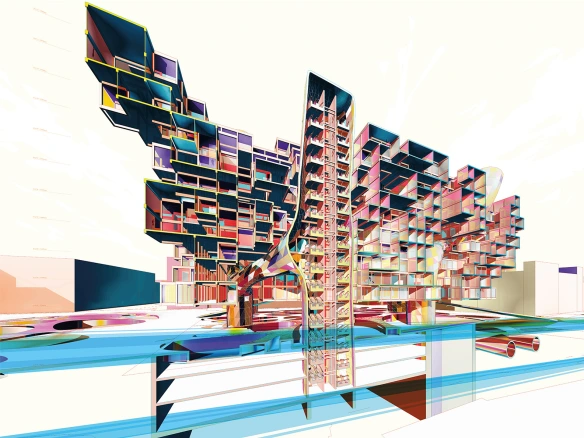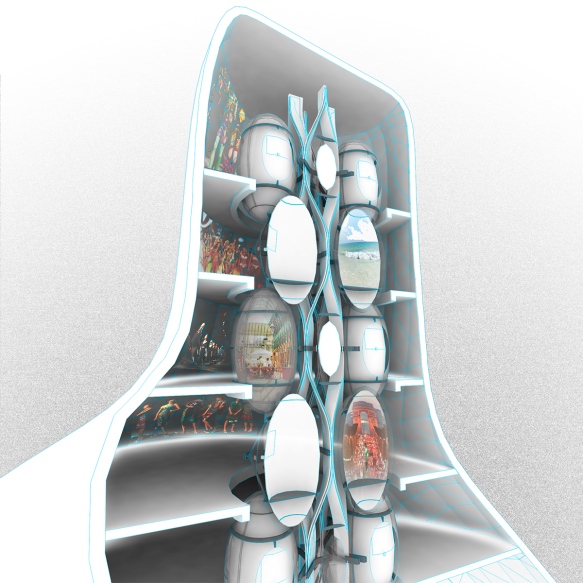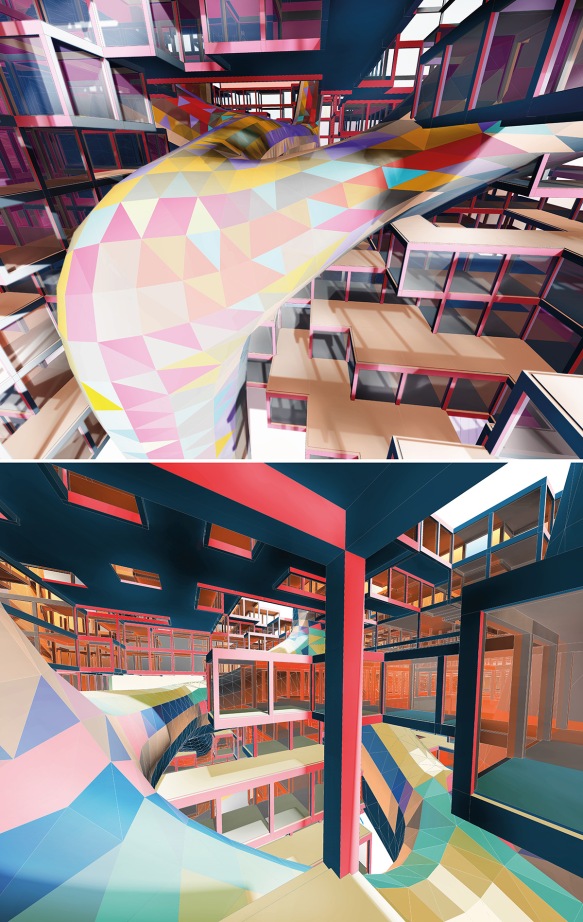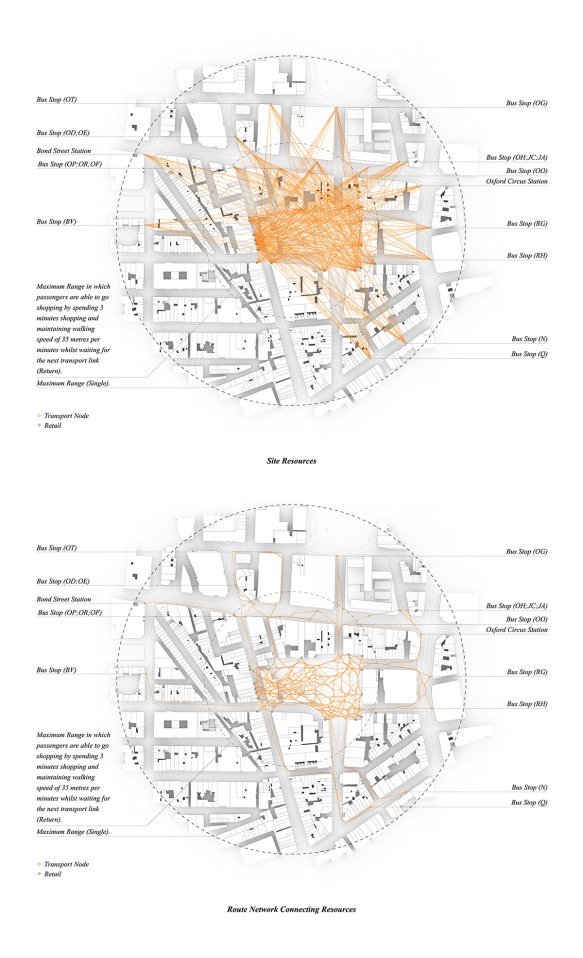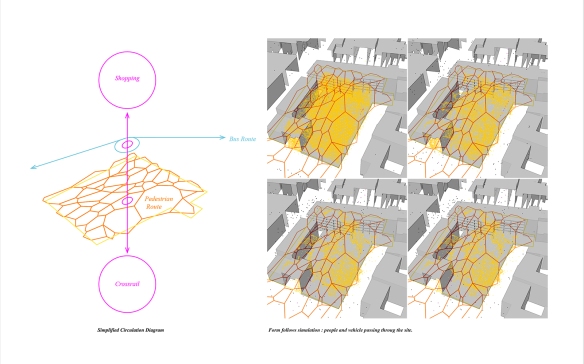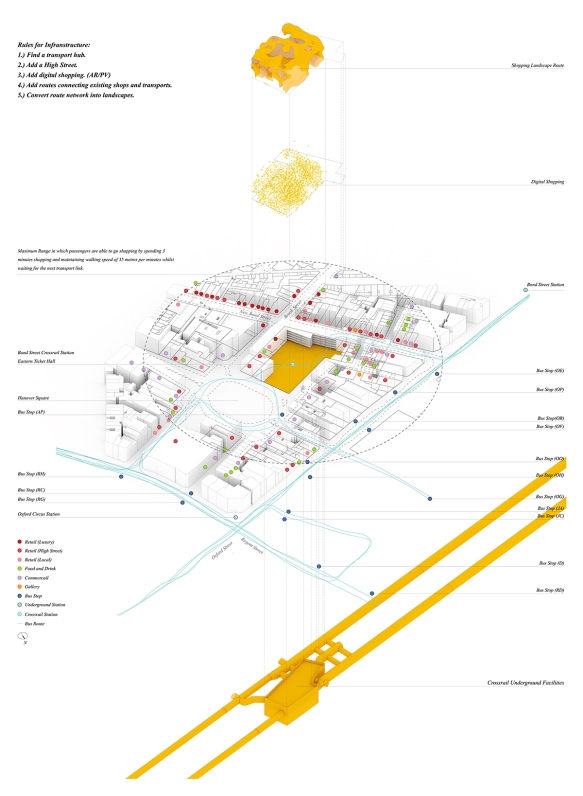People are quicker to pull out a smartphone to check the time, then to look at their watch, and even quicker to go shopping on their phone then to go to a mall. The shopping experience as we know today is rapidly disintegrating. More people are making their purchases online and now they can do it from anywhere, no longer shopping from home. The smartphone has allowed us to actually interact with our surrounding spaces. Shang-Jen Victor Tung begins to look at changing the way in which we shape, organize and even stock for today’s modern shopper. The architecture will no longer stand as a static strip mall, but will strive to connect with each customer thru digital means. Check it out after the jump!
STUDENT: Shang-Jen Victor Tung
SCHOOL: Royal College of Art
PROFESSORS: Roberto Bottazzi; Kostas Grigoriadis
YEAR: 2013
[N]on-line High street
“As all shopping can potentially be completed online, the physical space of the shopping centre is free to absorb new urban activities that will strengthen its relation to the city. In response to the current crisis of the High Street, this research draws inspiration from East Asia cities and hybridised retail and transport facilities. Various kinds and lengths of interval (waiting time) for transport define ranges that a passenger can reach from the transport node, and define the route network to surrounding resources. To be adapted to shopping in above condition, shopping spaces should be dynamically changed in functions and attributes.
Reflecting influences on shopping behaviour and spatial consequences achieved by new retail technologies, ‘[N]on-line High Street’ is a proposal for a hybrid scheme with online and physical retail at the future Bond Street Crossrail Station.
The proposal is a response to dynamic shopping spaces with three types of substantialism online-shopping database.
Dynamic Storage and Replenishment System = ‘Bidding Monitor Database’
Experiential Shopping Surface = ‘Categories Regions Themes Stories Database’
Mobile Device as Purse = ‘Member Database’
The architecture of such infrastructure is a porous system, which not only provides plenty of space for customised projection and interaction, but also shapes the speed at which customers can experience the building. The varied landscape, based on the combination of several modules, is determined by the circulation system and dynamic storage system that– utilising real-time purchasing data – allows minimum stock to be held in store.
Dynamic replenishment by analysis of purchase data allows minimum stocks in store. Only hot sellers, pre-orders, order for try-on and goods for special events are in stock. Experiential Shopping Surface adopting Augmented Reality and Physical Virtuality techniques allows dynamical changes of space, adding value to every customer’s visit. Log-ins with mobile devices connect the architecture to customers.”
FUTURES+ Original Submission

